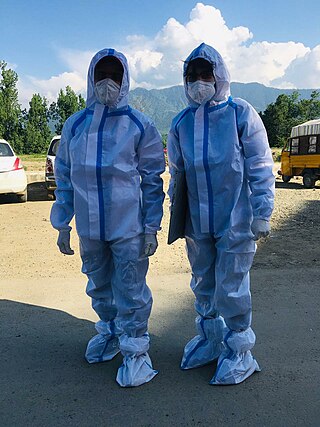Top Qs
Timeline
Chat
Perspective
Coated fabrics
Fabrics that go through a process of coating From Wikipedia, the free encyclopedia
Remove ads
Coated fabrics are those that have undergone a coating procedure to become more functional and hold the added properties, such as cotton fabrics becoming impermeable or waterproof. Coated textiles are used in a variety of applications, including blackout curtains and the development of waterproof fabrics for raincoats. [1]

Remove ads
Coating
The coating is an application of chemical substances on the surface of fabric that is to be made functional or decorative.[2] Coatings use less material than other types of applications, such as exhaust or padding on stenter.[3]
History
The earliest known coated fabric is Oilcloth. Oilcloth is produced by the application of boiled linseed oil. The use of boiled oils can be traced back to 200 AD.[4]
Types
Coated fabrics can be made in a variety of ways, depending on the coating ingredients used, such as chemical and particles. Rubber, plastic, and vinyl coatings are just a few examples.[5][6] Nanofabrics are coated with a wide range of nanoparticles to make the fabrics capable of enhanced properties such as ultrahydrophobicity, medical textiles (antimicrobial resistance), Ultraviolet protection, and elasticity.[7][8][9][10][11]
Nanofabric coatings create fabrics whose fibers have better durability and wearability, and less coating material is needed compared to conventional finishes due to the ordered structure.[12]
Use

The applications and uses of coated fabrics are numerous.
- In manufacturing of pristine clothes.[13]
- Self cleaning fabrics with lotus effect.[14]
- PPE kits, aprons, coverall and gowns for healthcare workers usable in viral diseases such as COVID-19,[15][16] medical textiles with protecting properties, body fluid resistance and antimicrobial surface.[17][16]
- Coated fabrics also contribute to fire-retardant fabrics.[18][19]
- In distinctive areas, coated fabrics are used for transportation, industrial application, geotextile, and military use.[20]
See also
References
Wikiwand - on
Seamless Wikipedia browsing. On steroids.
Remove ads
